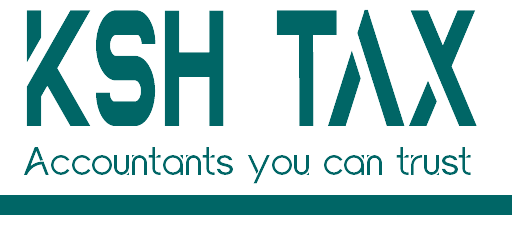Wondering about working from home tax deductions in Australia? You’re not alone!
With remote work becoming the new norm, it’s crucial to know what you can claim. From office supplies to internet bills, there’s a whole world of potential deductions waiting for you.
In this article, we’ll break down the eligibility criteria, explain the revised fixed rate method (spoiler: it’s 67 cents per hour!), and even tackle the tricky world of home office depreciation.
Eligibility Criteria for Home Office Deductions
To claim working from home tax deductions, you must meet certain eligibility criteria set by the Australian Taxation Office (ATO). Here are the key requirements:
Regular Work From Home Requirements
You can only claim deductions if you are working from home to fulfill your employment duties, not just for carrying out minimal tasks like occasionally checking emails or taking calls.
The work you perform from home should be a substantial part of your overall job responsibilities.
Additional Expenses Incurred
To be eligible for deductions, you must incur additional running expenses as a direct result of working from home.
These expenses can include increased utility bills (electricity, gas, internet, phone), stationery costs, and the depreciation of home office equipment or furniture.
Adequate Record-Keeping
Maintaining proper records is crucial for claiming home office deductions. You need to keep records that substantiate the expenses you incurred while working from home.
These records can be in various forms, such as timesheets, logs, diaries, or bills and receipts for the expenses.
The ATO may require you to provide these records as proof of your eligibility for the deductions claimed.
Failure to maintain adequate records can result in your claims being disallowed or penalties being imposed.
The Revised Fixed Rate Method Explained
67 Cents Per Hour Rule
You can claim a deduction of 67 cents for each hour you work from home during the relevant income year.
This fixed rate covers the additional running expenses you incur, such as:
- Home and mobile internet or data expenses
- Mobile and home phone usage expenses
- Electricity and gas (energy expenses) for heating, cooling, and lighting
- Stationery and computer consumables like printer ink and paper
Expenses Covered by the Fixed Rate
The 67 cents per hour rate includes the total deductible expenses for the additional running expenses mentioned above.
If you’re using this method, you cannot claim a separate deduction for these expenses. However, you can claim a separate deduction for:
- The work-related use of technology and office furniture like chairs, desks, computers, and bookshelves. These are generally depreciating assets that decline in value over time.
- Repairs and maintenance of these depreciating assets.
If the item costs $300 or less and you use it mainly for work-related purposes, you can claim an immediate deduction for the cost in the year you buy it.
This may include items such as keyboards, computer mice, power boards, desk lamps, and chargers.
For depreciating assets that cost more than $300 or form part of a set costing more than $300, you can claim a deduction for the decline in value over the effective life of the item.
You can also choose to work out the decline in value of low-cost assets and low-value assets with a cost or opening adjustable value of less than $1,000 through a low-value pool, using a diminishing value rate.
If you use your depreciating assets for both work and private purposes, you need to apportion your decline in value deduction and claim only the work-related portion as a deduction.
Claiming Depreciation on Home Office Assets
You can claim deductions for the decline in value of depreciating assets used for work purposes, such as office furniture and equipment. The deduction you can claim depends on the cost of the asset.
Items Under $300
If the cost of the depreciating asset is $300 or less, you may be eligible for an immediate deduction.
This means you can claim the full purchase price as a deduction in the year you buy the item. However, there are a few conditions to meet:
- You must use the asset primarily (more than 50% of the time) for work-related purposes.
- The asset cannot be part of a set that costs more than $300 in total.
- The asset cannot be one of multiple identical or substantially identical assets that cost more than $300 collectively.
Examples of items under $300 that may qualify for an immediate deduction include keyboards, computer mice, power boards, desk lamps, and chargers.
If you use the asset for both work and personal purposes, you need to apportion the deduction and claim only the work-related portion of the cost.
Depreciating Larger Purchases
For depreciating assets that cost more than $300, or if they form part of a set costing more than $300, you cannot claim an immediate deduction. Instead, you can claim a deduction for the decline in value over the asset’s effective life.
Examples of such assets include:
- Office furniture like desks, chairs, and bookshelves
- Computers, laptops, and related accessories
- Office equipment like printers, scanners, and shredders
To claim the deduction, you need to calculate the asset’s decline in value using an appropriate method, such as the diminishing value method or the prime cost method.
The deduction is claimed as “other work-related expenses” on your tax return.
If you use the asset for both work and personal purposes, you must apportion the deduction and claim only the work-related portion of the decline in value.
Remember to keep records of your expenses and the work-related use of the assets to substantiate your claims.
Occupancy Expenses: When Can You Claim Them?
Home as Principal Place of Business
You can claim a deduction for occupancy expenses, such as mortgage interest, rent, council rates, land taxes, and house insurance premiums, if you operate your business from home and it’s your principal place of business.
However, there are specific criteria you must meet:
- Your home office must be a dedicated space set aside exclusively for business purposes.
- The area should not be readily adaptable for private use, such as a doctor’s surgery located within a home.
If you meet these conditions, you can deduct a portion of the occupancy expenses based on the floor area dedicated to your business operations.
Capital Gains Tax Implications
While claiming occupancy expenses can provide tax benefits, it’s essential to be aware of the potential capital gains tax (CGT) implications when you sell your home.
Generally, your primary residence is exempt from CGT. However, if you used part of your home for business purposes, you may have to pay CGT on the portion used for business.
- No CGT Liability: If you didn’t have a specific area set aside for business activities and didn’t claim occupancy expenses, you won’t be liable for CGT when selling your home.
- Partial CGT Liability: If you had an area dedicated to your business, you may need to pay CGT on the capital gain for that portion of your home during the period it was used for business purposes. The taxable percentage is typically the same as the percentage of occupancy expenses you claimed.
- Small Business CGT Concessions: You may be eligible to apply one or more small business CGT concessions to reduce your capital gain, unless the main use of your home was to produce rental income.
- Apportioning CGT: If the concessions don’t apply, you’ll only pay CGT for the periods when you used your home for business. For example, if you owned your home for 10 years but used it for business in the last 2 years, you’ll only pay tax on the capital gain for those 2 years.
It’s crucial to keep accurate records of your home office usage and expenses to calculate the appropriate CGT liability when selling your home.
Get Expert Help with Your Tax Deductions
Navigating work-from-home tax deductions can be tricky.
At KSH Tax, we’re here to help both individuals and businesses maximize their returns. Our expert team stays up-to-date with the latest ATO regulations to ensure you claim every eligible deduction.
Confused about home office expenses or capital gains implications? Don’t sweat it! Book an appointment with us today, and let’s make your tax season stress-free while optimizing your deductions.













